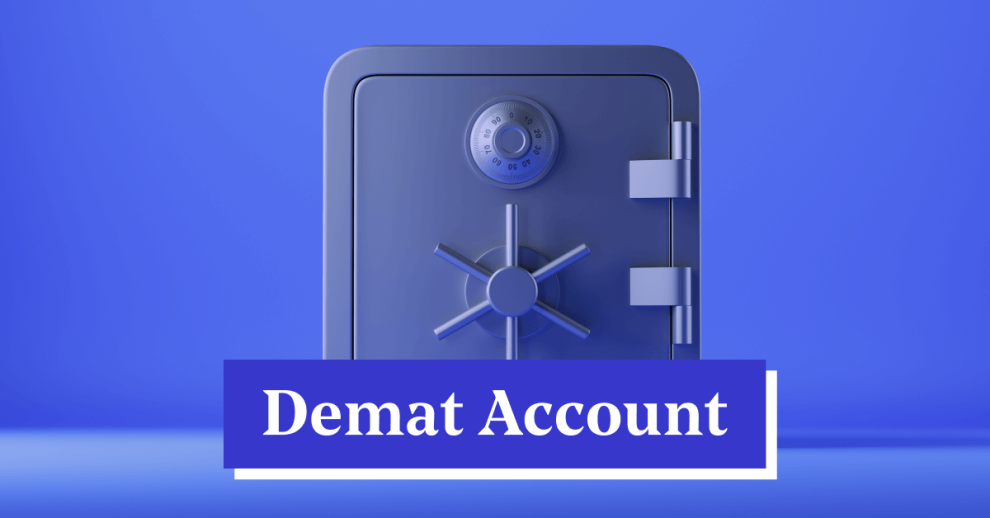The Indian stock market offers a wealth of opportunities for investors looking to grow their wealth over the long term. However, before you can start buying and selling shares, there’s one crucial tool you need in your arsenal: a demat account. In this complete guide, we’ll walk you through everything you need to know about opening a demat account in India, from understanding the basics to choosing the right depository participant and navigating the account opening process.
What is a demat account, and why is it essential for investing?
A demat account, short for “dematerialized account,” is an electronic repository that holds your shares and other securities in a digital format. In the past, investing in the stock market involved physical paper share certificates, which were cumbersome to manage and prone to damage or loss. With the advent of dematerialization, physical certificates have been largely phased out in favor of electronic record-keeping.
Here are a few key reasons why having a demat account is indispensable for modern investing:
- Mandatory for Trading: The Securities and Exchange Board of India (SEBI) has made it compulsory for all stock market transactions to be executed electronically. Without a demat account, you simply cannot buy or sell shares.
- Convenience and Efficiency: Demat accounts offer a secure and streamlined way to manage your investments. You can easily monitor your holdings, track your portfolio’s performance, and execute trades with just a few clicks.
- Reduced Paperwork and Costs: By eliminating the need for physical share certificates, demat accounts help reduce paperwork, minimize the risk of fraud or forgery, and lower overall transaction costs.
- Speedy Settlements: With dematerialized securities, the settlement process for trades is much faster and more efficient compared to the era of physical certificates.
Choosing the Right Depository Participant for Your Demat Account
To open a demat account, you’ll need to approach a depository participant (DP). A DP is an entity registered with a depository (like the National Securities Depository Limited or Central Depository Services Limited) that acts as an intermediary between you and the depository. Think of a DP as a bank for your shares; they maintain your demat account, handle your transactions, and ensure the safety of your investments.
There are numerous DPs to choose from, including banks, brokers, and other financial institutions. Here are some factors to consider when selecting a DP:
- Credibility and Market Standing: Opt for a well-established DP with a solid track record and reputation in the industry. Look for customer reviews, industry ratings, and regulatory compliance to gauge a DP’s credibility.
- Fees and Charges: Compare the account opening fees, annual maintenance charges (AMC), and transaction costs levied by different DPs. Some may offer lower charges for high-volume traders or waive AMC for the first year. Choose a fee structure that aligns with your trading frequency and investment size.
- Online Platforms and Mobile Apps: In today’s digital age, having a user-friendly online portal and mobile trading app can greatly enhance your investing experience. Check if the DP provides robust online tools for account management, portfolio tracking, research resources, and seamless trading.
- Offline Presence and Support: While online channels are convenient, having access to physical branches and offline support can be reassuring, especially for new investors. Consider the DP’s branch network, customer service quality, and grievance redressal mechanisms.
- Value-Added Services: Some DPs offer additional services like research reports, educational resources, or preferential access to IPOs (initial public offerings). Evaluate if these value-adds align with your investment goals and needs.
Popular DPs in India include ICICI Direct, HDFC Securities, Kotak Securities, SBI Cap Securities, Zerodha, Upstox, and 5paisa Capital, among others. Take your time to research and compare different DPs before making a decision.

Documents Required for Opening a Demat Account
To open a demat account, you’ll need to submit certain documents to your chosen DP for verification. The standard documents required are:
- PAN Card (Permanent Account Number): This is a mandatory document for all financial transactions in India, including opening a demat account.
- Proof of Identity: You can submit any one of the following: a passport, voter ID card, driving license, or Aadhaar card.
- Proof of Address: Again, any one of these documents will suffice: a passport, voter ID card, driving license, Aadhaar card, or utility bills (electricity, water, gas, or landline telephone).
- Passport-sized Photograph: Most DPs require a recent passport-sized color photograph for their records.
- Bank Account Proof: You’ll need to provide a canceled check or bank statement to link your bank account to the demat account for financial transactions.
- Income Proof (for derivatives trading): If you plan to trade in derivatives like futures and options, you may need to submit proof of income (such as salary slips, IT returns, or bank statements) to comply with regulatory guidelines.
Some DPs may have additional documentation requirements, so it’s best to check with them beforehand to avoid any delays in the account opening process.
Step-by-Step Process for Opening a Demat Account
Now that you know what a demat account is, why it’s essential, and what documents you need, let’s dive into the actual process of opening an account:
- Choose a Depository Participant: As discussed earlier, research and select a DP that meets your requirements.
- Fill the Account Opening Form: Visit the DP’s website or nearest branch to access the demat account opening form. Fill in your personal details, contact information, bank account details, and nominee information (if applicable) accurately.
- Submit Documents: Attach copies of the required documents (as mentioned in the previous section) along with the completed account opening form. Some DPs may require you to bring original documents for verification.
- In-Person Verification: SEBI mandates that all demat account holders undergo an in-person verification (IPV) process. This involves visiting the DP’s branch or meeting with an authorized representative to confirm your identity and address. Some DPs also offer e-KYC (electronic know your customer) facilities for a paperless account opening process.
- Account Activation: Once your documents are verified and the IPV process is completed, your DP will activate your demat account. This usually takes 2–3 working days. You’ll receive a unique beneficiary owner identification number (BO ID) and login credentials for accessing your account online.
- Link Your Trading and Bank Accounts: To start investing, you’ll need to link your demat account with a trading account (provided by a broker) and your bank account. This allows you to seamlessly transfer funds and execute buy-sell orders. Many DPs offer integrated 3-in-1 accounts that combine demat, trading, and bank accounts for added convenience.
And that’s it! With your demat account opened and linked, you’re ready to embark on your investment journey in the Indian stock market.
Tips for Managing Your Demat Account
Opening a demat account is just the first step. To make the most of your investment experience, here are a few tips to keep in mind:
- Monitor Your Holdings Regularly: Keep track of your portfolio’s performance, corporate actions (like dividends, bonuses, or stock splits), and any regulatory changes that may impact your holdings.
- Secure Your Login Credentials: Treat your demat account login details with the utmost confidentiality. Avoid sharing them with anyone else, and consider enabling two-factor authentication for added security.
- Stay Informed: Regularly update your knowledge about the stock market, economic trends, and your invested companies. This will help you make informed decisions and stay ahead of the curve.
- Diversify Your Portfolio: Don’t put all your eggs in one basket. Spread your investments across different sectors, market capitalizations, and asset classes to manage risk effectively.
- Review and Rebalance: Periodically review your portfolio’s allocation and rebalance it to align with your financial goals and risk tolerance. This may involve booking profits, cutting losses, or realigning your asset mix.
Frequently Asked Questions (FAQs) About Demat Accounts
- Can I open a demat account without a PAN card?
No, a PAN card is mandatory for opening a demat account in India. - Can I have multiple demat accounts?
Yes, you can open multiple demat accounts with different DPs. However, it’s advisable to consolidate your holdings into one or two accounts for easier management and to avoid paying multiple charges. - Is there a minimum balance requirement for demat accounts?
No, there is no minimum balance requirement for demat accounts. However, some DPs may charge higher maintenance fees for accounts with low or nil balances. - Can I transfer my holdings from one demat account to another?
Yes, you can initiate an inter-depository transfer (IDT) to move your holdings from one demat account to another, even if they are with different depositories (NSDL or CDSL). - How long does it take to open a demat account?
The account opening process usually takes 2–3 working days after submitting all the required documents and completing the IPV process. However, timelines may vary depending on the DP and the completeness of your application.
Conclusion
Opening a demat account is a crucial step towards starting your investment journey in the Indian stock market. By understanding the importance of demat accounts, choosing the right depository participant, and following the account opening process diligently, you can set a strong foundation for your investing activities. Remember to manage your account responsibly, stay informed, and align your investments with your financial goals. Happy investing!
















Add Comment